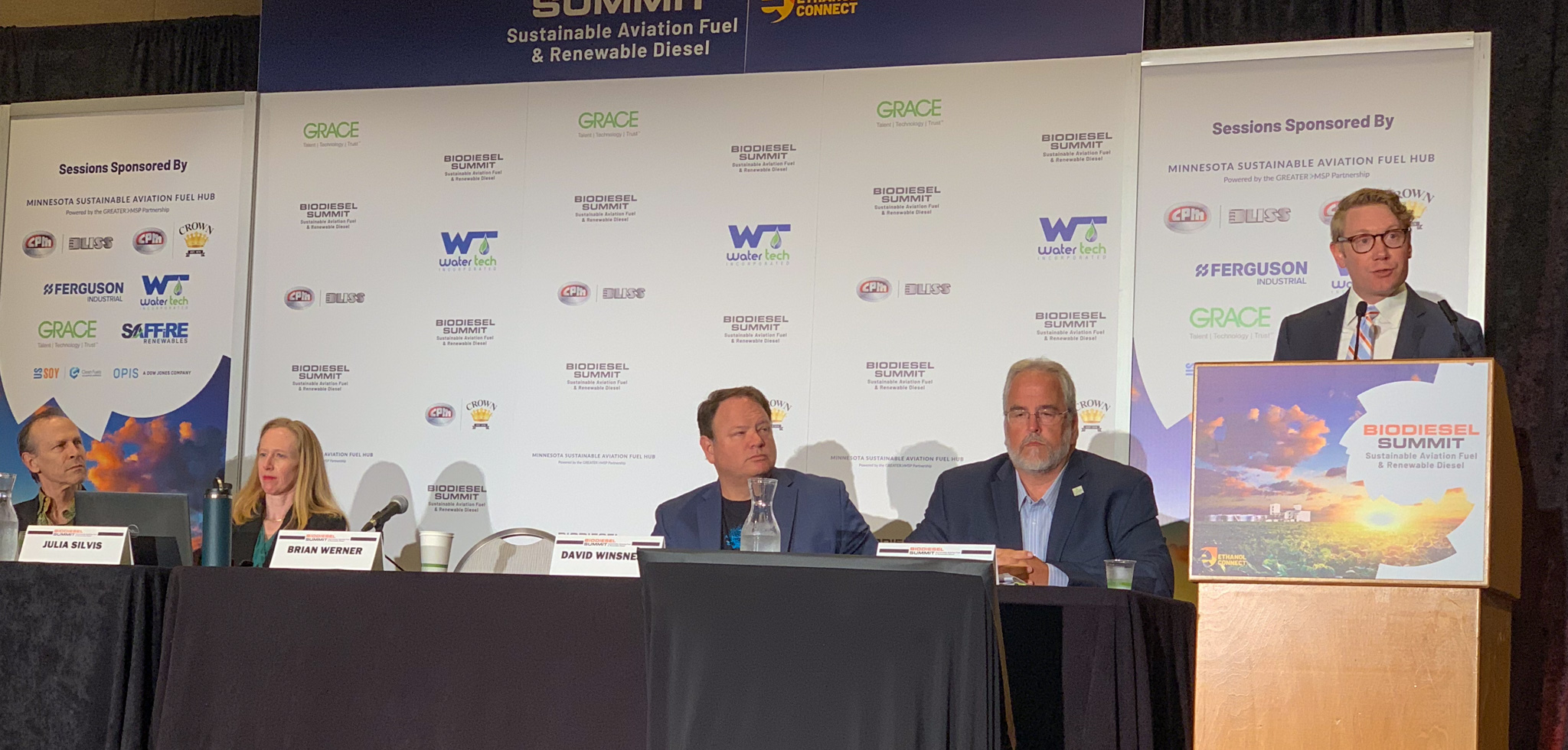The Minnesota Bio-Fuels Association’s executive director, Brian Werner, participated in a panel discussing the potential for Minnesota to become a sustainable aviation fuel (SAF) hub at the 2024 Biodiesel Summit which was being held concurrently with the International Fuel Ethanol Workshop in Minneapolis today.
Titled, “Minnesota Sustainable Aviation Fuel Hub: Approach to Advancing SAF Production from Biogenic Feedstocks,” the panel was moderated by Steve Csonka, executive director for the Commercial Aviation Alternative Fuels Initiative.
Other panel members included David Winsness, president of Comstock Fuels, Julia Silvis, managing director of research and intelligence at GREATER MSP and Nick Jordan, professor of agronomy and plant genetics at the University of Minnesota.
During the panel, Werner said the Biden Administration’s goal of producing 3 billion gallons of SAF by 2030 would not be achievable without using ethanol as jet fuel.
However, he said ethanol-to-jet currently faces several challenges and barriers.
The first is the ability for ethanol producers to measurably reduce their emissions to meet the requirements under the Inflation Reduction Act. This, he said, can be achieved through improving technologies and efficiencies at ethanol plants, climate smart agriculture practices and carbon capture, utilization and sequestration.
The second barrier is policy and regulatory uncertainty. In particular, Werner pointed to the regulatory requirements for SAF-qualifying feedstocks which includes all-or-nothing climate smart agriculture practices such as establishing cover crops which is difficult in the northern corn belt.
Finally, he said the costs, time and certainty associated with environmental permitting for ethanol plants to lower their carbon index scores was another barrier.
He said the Minnesota Pollution Control Agency’s review times for permits was six times longer than other neighboring states, thus putting Minnesota’s ethanol industry at a significant disadvantage.

